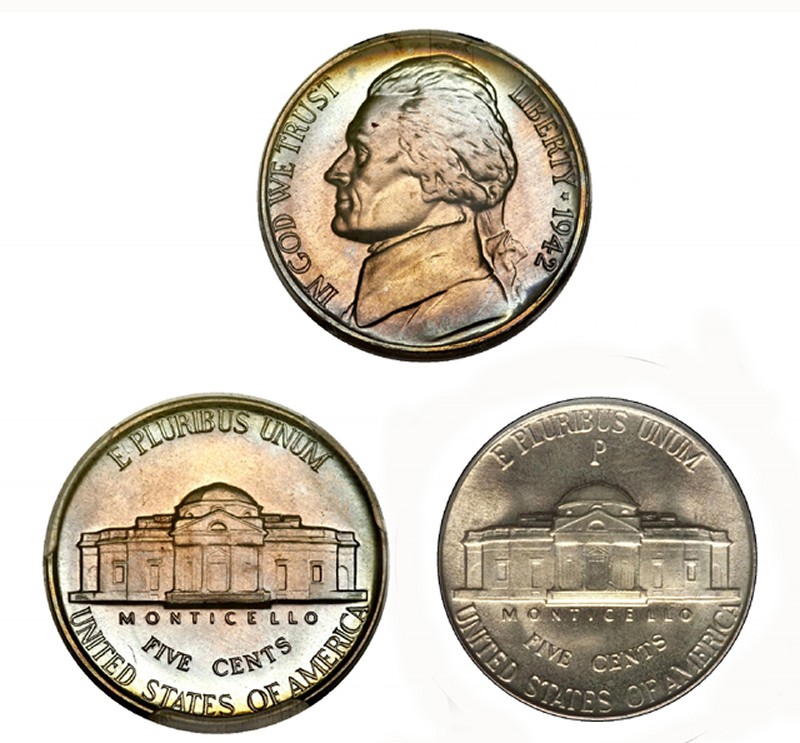PART I. Die Subtypes:
Mid-year Design Modifications:
1942 Jefferson Nickel; with and without mintmark
Definition: The United States of America declaration of war against the Axis Powers in January of 1942 called for critical war materials to be stockpiled. One of those materials — nickel — was used in the making of the Jefferson five-cent piece. On March 27, 1942, with authorization from Congress, the material composition of the five-cent piece was changed from 75% copper / 25% nickel to 56% copper/ 35% silver / 9%manganese.
In October of 1942 this new alloy was first used in the striking of nickels. Along with this change of composition, the mintmark was made larger and placed on the reverse of the coin over Monticello. For the first time the “P” mintmark was used to designate coins struck at the Philadelphia Mint.
The Denver Mint had completed its allotted run of nickels before the change had been made. In 1942, the San Francisco and the Philadelphia Mints were the only mints to strike the new alloy Jefferson nickels, nicknamed “War nickels”.
With the Philadelphia mint striking both new and old-alloy nickels, two versions appear from that mint in that year; one without a mintmark and the other with the P-mintmark on the reverse of the coin.

The above images show the location of the mintmark above Monticello on the “war nickels”. The mintmark in prior years had been placed to the right of Monticello, with the exception of coins struck by the Philadelphia mint which did not have a mintmark.
Images are courtesy of Heritage Auctions.